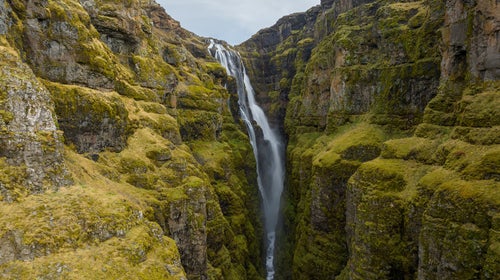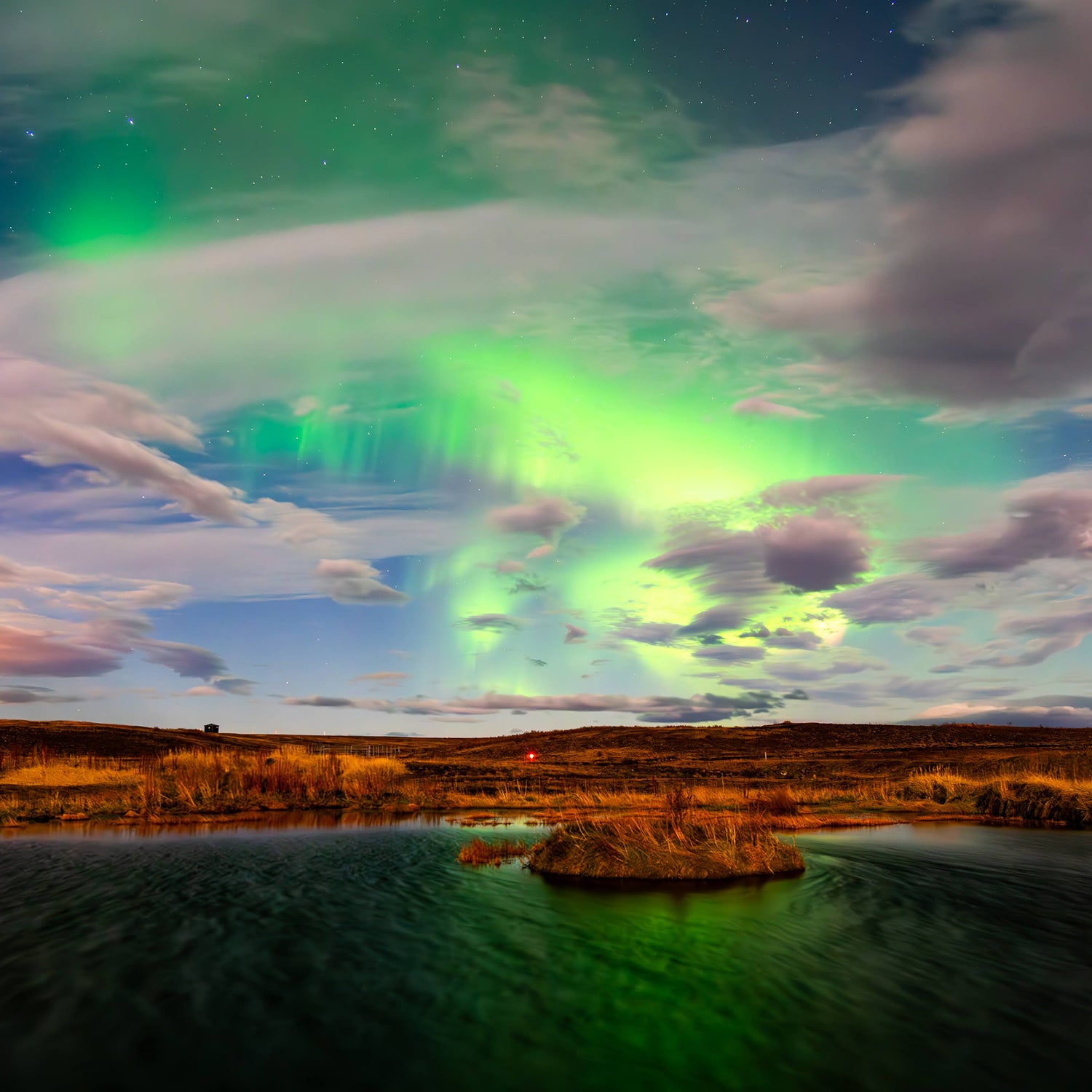There’s a saying in Iceland that’s sort of the country’s unofficial motto: Þetta reddast (sounds like “thetta rettast”). Like so many Icelandic words there isn’t a direct translation into English, but the essence of it is, “Ehhh, it’ll be fine…” My good friend , who lives in Reykjavik, tells me, “It’s a big part of our national identity. It’s what we say when we’re rolling with what’s going on, in the face of any kind of adversity.” It’s not as passive as it sounds, though. Rather, it’s about accepting the things you can’t control, and pivoting to adapt and alter the things you can.
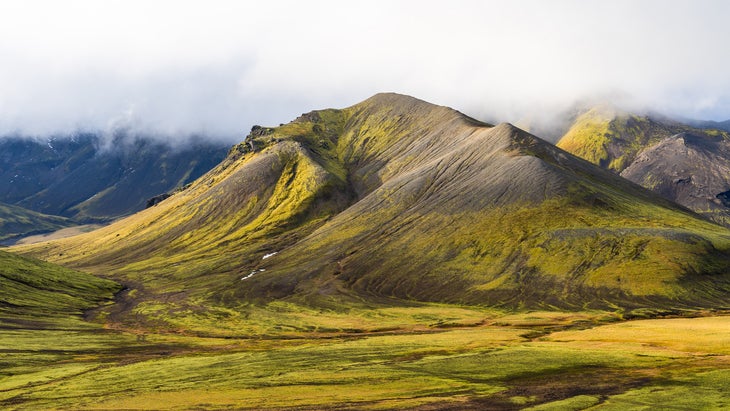
This is sage advice for first-timers visiting one of the most rugged and remote island countries in the world. To call the weather “unpredictable” would be generous, and you never know what strange obstacles you might encounter—hello, volcanoes. There have been ongoing eruptions in the town of Grindavik in southern Iceland and tourists have been advised to avoid that area. But the rest of the country is open and if you’re willing to embody the Þetta reddast spirit, you’ll have an incredible time in an otherworldly place, especially if you’re game to travel to Iceland in the off-season.
In October, I finally went to scope it out for myself. My aforementioned buddy Pétur was born and raised in Iceland before moving to California where he and I became friends in high school. He moved back during the pandemic, so I took the rare opportunity to see this majestic place through a local’s eyes. I spent two weeks traveling all over with him and other friends, pivoting a lot, experiencing weird weather, taking thousands of photos, and having an absolute blast. Here’s what I learned.
Why Travel to Iceland in the Shoulder Season?
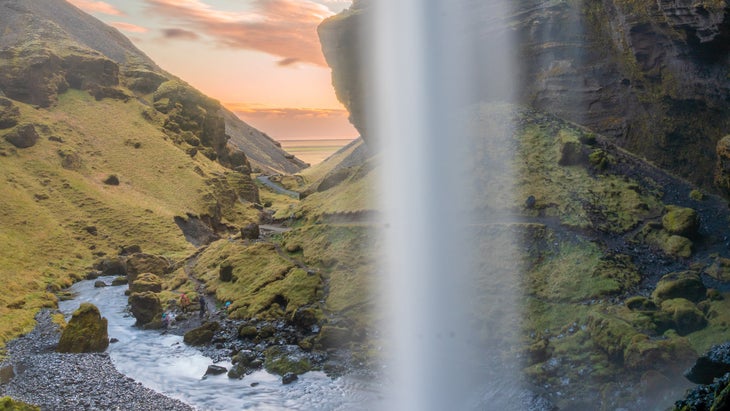
An Icelandic adventure in the off-season (roughly autumn and spring) has a few distinct advantages:
It’s markedly cheaper.
While flights to Iceland are usually reasonable (I flew , which has a ton of direct flights from the U.S.), life on the ground can be pretty pricey. Accommodations, rental vehicles, tours, and just about everything that isn’t edible is less expensive if you don’t go during the summertime rush.
There are a heck of a lot less people.
Speaking of rush, you will see noticeably fewer tourists in the off-season. That translates to less-crowded trails, better photographs, and critically, easier last-minute bookings—key to your ability to adapt to changing conditions and still get the most out of your trip. More on that in a bit.
You actually get to see the Aurora Borealis.
You can usually only view the Northern Lights in the off-season. Iceland is so far north that during the summer high-season, the sky never gets dark enough for the aurora borealis to be visible. Iceland is one of the best places on the entire planet to see the lights, so if that’s on your bucket list, then bundle up and visit in the off season. (Stay tuned for specific recommendations on where to view them.)
Know Before You Go: Tips for Shoulder-Season Visits
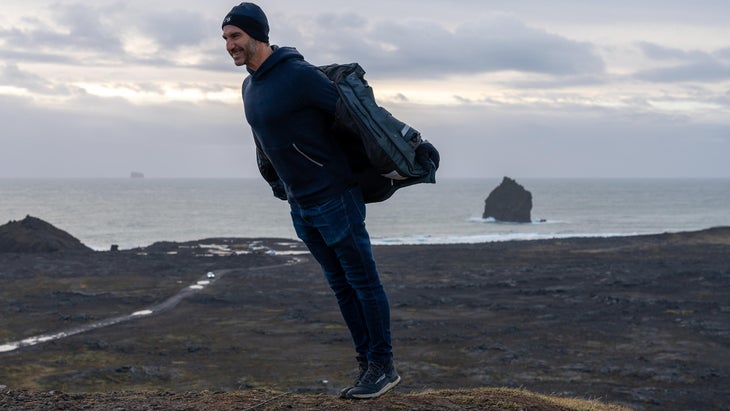
Of course, visiting Iceland during shoulder season isn’t without its challenges. First and foremost, there’s the weather. Battered by the Atlantic Ocean just south of the Arctic Circle, you’re more likely to encounter rain, snow, and the notorious wind in colder months. Days are shorter, too, so you’ll want to get after it early.
Gear You Should Pack for Iceland
Layers will most definitely be your friend. And bring plenty. My daily outfit consisted of:
- Thermal tops and bottoms
- Thick wool hiking socks
- Pair of
- Smartwool hoodie
- (also a good windblocker)
- Pair of
- Super-warm wind/rain-proof
- Wind-proof
With that kit, I was plenty toasty even when the rain came down nearly sideways.
Get Your Tech Dialed: Oh, and make sure you bring a power adapter, because Iceland uses European plugs. I’d recommend grabbing at least one or two, plus an extension cord with a three-way splitter so you can charge up more gadgets at once.
Now, the fun stuff.
Getting Around Iceland: The Best Transportation Options
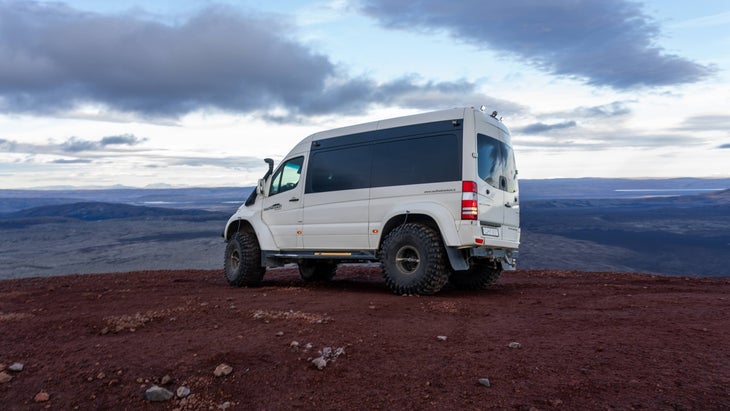
Iceland is one of those countries where you really want to have your own wheels. There are buses here and there, but if you’re chasing rugged adventures, vehicular autonomy is a must. Of course you could join a tour group, but then you’re stuck with someone else’s agenda and schedule, and you’ll likely be surrounded by tourists.
Be Sure to Rent the Right Rig
Selecting a vehicle plays a significant role in where you can and can’t go. Once the colder months hit, the roads get icy and snowy. Even if you plan to stay in hotels and avoid sleeping in your vehicle, I strongly recommend you rent a rig with all-wheel drive or four-wheel drive that has burly tires to match and that comes with ample clearance. This will enable you to drive safely off the beaten path and check out more of the country, with even fewer tourists around during the day. (As a starting point, check out , which features a fleet of different 4WD-equipped Toyotas starting from $84 per day.)
For a Bed on Wheels, Consider a Campervan or 4X4 with a Rooftop Tent
Cruising around Iceland by campervan or a rig with a rooftop tent is another solid option. You’ll see tons of these on the road, as most outdoor adventure enthusiasts go this route. There are a lot of cool camp spots all around the island, and combining your accommodations with your wheels can be a huge cost saver. Just make sure the van you’re renting has some sort of heater (diesel or propane) and make sure it has AWD or 4WD (again, plus rugged tires and clearance). If you opt for a rooftop tent, make sure you visit in the (warmer) colder months, like September and May, otherwise sleeping on top of your car in winds and frigid temps will be brutal otherwise.
No matter what, read reviews of your outfitter before you commit, because some offer SOS services—in varying degrees of reliability—and you don’t want to deal with a breakdown when you’re deep in Iceland’s backcountry.
Most campervans and roof tent rigs come with bedding, a camp kitchen, stove and fuel, and a plug-in cooler, all of which help facilitate maximum autonomy. For a small upcharge, you can opt for a WiFi router, which makes booking last-minute campsites and navigation easier. (As a starting point, check out for rooftop tent and campervan options. Prices vary.)
Stay on Top of Your Road Conditions Beta
Whichever vehicle you choose, the shows up-to-date road conditions and closures, and will save you essential time.
And be careful out there. Know your driving skills, and the limits of the vehicle you’re renting, and make sure the tires have tread that can handle the conditions you’ll encounter. If in doubt, don’t be an idiot and drive it.
Eating in Iceland: Always Expensive, Rarely Fantastic
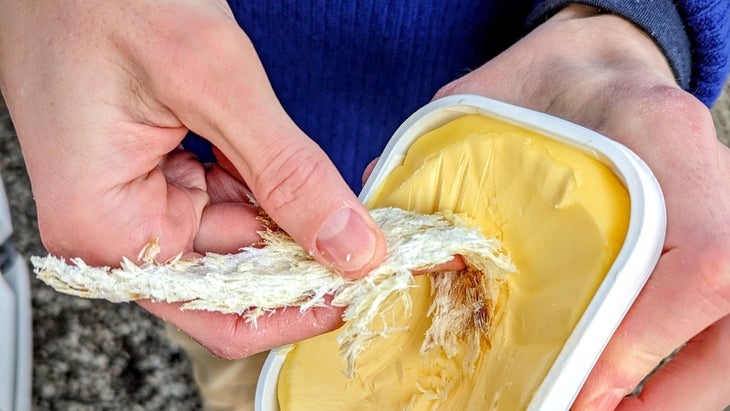
Now would be a good time to mention food, and it’s not great news. For starters, grub in Iceland is almost universally pricey, owing largely to the fact that nearly everything has to be imported. It’s also not exactly a foodie haven (with some notable exceptions), so I’d recommend stocking up at a supermarket, like Bonus or Krónan, before you leave Reykjavik. Aside from staples like PB&J, grab an assortment of Icelandic yogurt (a.k.a. skyr). It’s delicious.
Don’t miss the cod jerky, either, which my friend Pétur says is commonly dragged across a tub of Icelandic butter when you eat it. (I tried it, and can confirm it’s indeed tasty.) I also found the sweetest, crunchiest carrots I’ve ever had in my life, and you’ll want to try (or at least force yourself to try) the divisive, salted black licorice (aka salmiakbitar) the island is famous for.
When You Arrive in Iceland
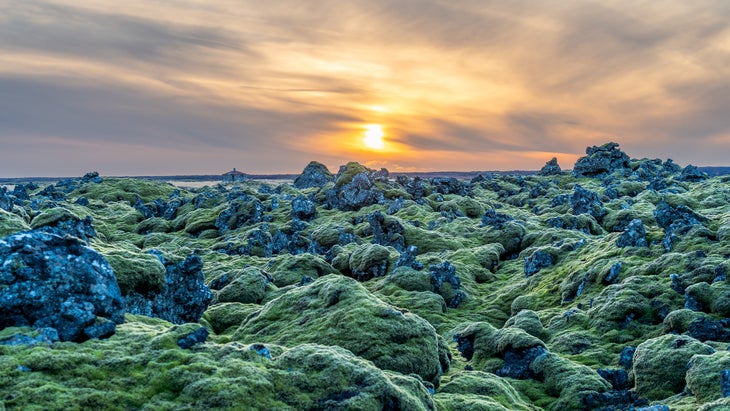
You’ll land at Keflavík International Airport. If you’re coming from the U.S. you’ll likely arrive early in the morning on a red-eye, and may be very discombobulated. If so, and you’ve got the time, take it easy on your first day there by checking out the Reykjanes peninsula. Then, head to Reykjavik to scope out some of the museums and cultural sites (see below for specifics).
Must-Dos on the Reykjanes Peninsula
The 40-minute drive from the airport to the capital city is also absolutely stunning. You’ll pass fields of lava rock that seem to go on forever, and zip by the Instagram-famous . (Note: every Icelandic person I met rolled their eyes at it, though. It’s pretty, but overpriced, from $72, and loaded with tourists. It may also be closed depending on nearby volcanic eruptions.)
If you somehow manage to sleep on the plane and want to hit the ground running, there are a ton of cool spots right on the Reykjanes peninsula before you get to Reykjavik. Don’t miss:
- Seltún Geothermal Area, with sulfury, bubbling, steaming mineral pools
- Krísuvíkurberg Cliffs, with a sheer drop into the pounding ocean below. (It’s so abrupt it looks like the ground just snapped off.)
- Reykjanes Lighthouse, right next to the beautiful rocky shore of Valahnúkamöl—both well worth exploring.
I had an absolutely incredible lobster soup at the Café Bryggjan in Grindavík, but unfortunately between then and writing this piece, a cluster of earthquakes and several nearby volcanic eruptions has effectively brought the quaint fishing village to its knees. The town literally sunk several feet and now has a deep, 1.2-mile long fissure running through the middle of it. Its future is currently unknown. Again, why you have to be ready to adapt in Iceland.
Explore Iceland’s Capital: What to See and Do in Reykjavik
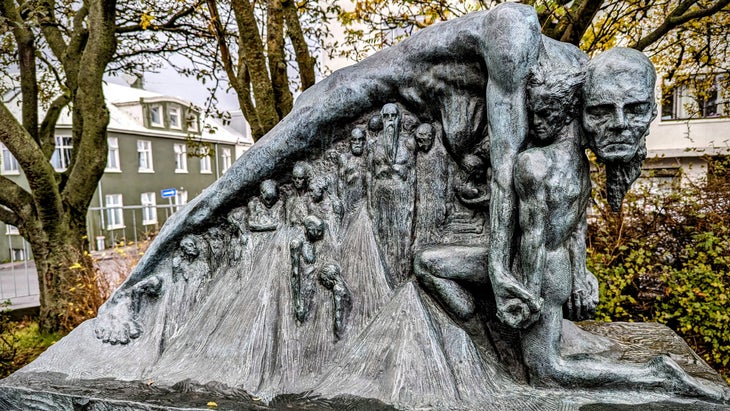
Hit Up a Street Vendor or Restaurant for a Hot Dog: When you get to Reykjavik, first things first: Get yourself a hot dog. I regret to inform you, my fellow Americans, that we have been surpassed in hotdoggery, and not by a little. Icelandic dogs have crispy fried onions, multiple sauces, soft buns, and snappy wieners. I ate them almost every day.
Scope Out the Historic Downtown: Work off the hotdogs by checking out the historic downtown area on foot. The Einar Jónsson Museum features some statues that would make Rodin jealous, and there’s a lot to see around the waterfront, including the massive Harpa Concert Hall.
Visit a Real Locals’ Hot Spring: If you’re craving some hot spring action, check out one of the dozens of public pools (like , for roughly $10 per entry) in Reykjavik. No, they’re not glamorous like the aforementioned Blue Lagoon, but all of the heating in Iceland (including hot water) comes from geothermal activity. The water is high in mineral content and it’s deeply soothing. The pools are a massive part of the culture there and they feature several hot tubs at different temperatures, saunas, cold plunges, and even some waterslides.
Just make sure you adhere closely to the showering instructions (i.e. shower naked beforehand and wash your whole body with soap). The waters there are considered sacred to the locals, and disrespecting them by not following pre-soak protocol is one of the rare ways to piss Icelanders off. The public pools are also for socializing, and you’re likely to meet some friendly folks who may offer you insider tips. Effectively everybody in Iceland speaks English, but if you learn a few basic phrases in Icelandic before you show up, it’ll go a long way.
Dine Out on Lamb Stew: For dinner, grab yourself lamb stew (known as Kjötsúpa, an Icelandic specialty), and pass out for the night before you hit the road bright and early.
The Shoulder-Season �����ԹϺ��� Itinerary for Iceland Newbies
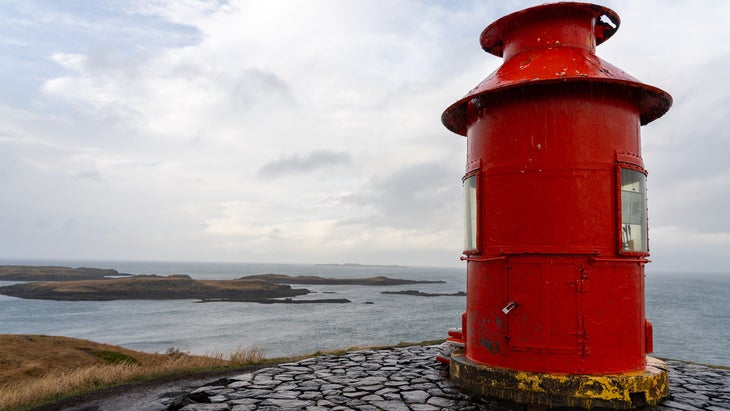
As cool as Reykjavik is, that’s not what you came for, is it? Here’s what I did. My play-by-ear trip turned into a nice little loop through the west and south, though I recommend you use these ideas more for activity inspiration as opposed to an exact prescription. After all, no two days in the shoulder season are the same and there are endless possibilities. Here were my highlights:
Day 1: Hit Up Some Waterfalls and Hot Springs
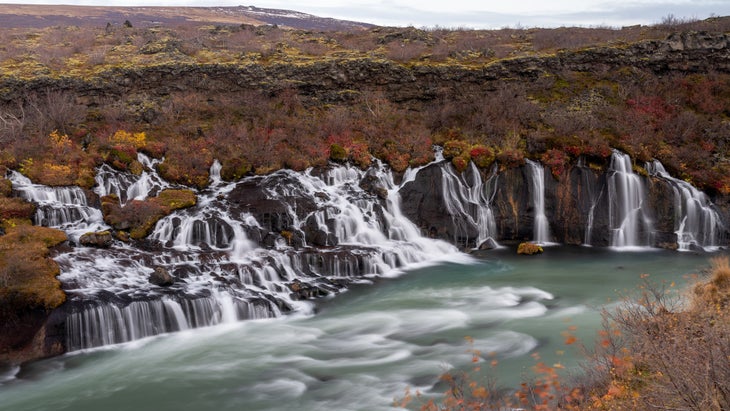
Out of the city, our first big stop was Barnafoss, a couple hours northeast of Reykjavik, an utterly massive conglomeration of waterfalls. (FYI, “foss” means waterfall in Icelandic.) If there’s wind, wear your waterproof layers because the mist will soak you to the bone. It’s almost overwhelming to see so many waterfalls from one vantage point, and it’s an excellent place to work on your long exposure photography. (I recommend a tripod and a variable ND filter, along with a few absorbent lens-wipes.)
From there, we backtracked 20 minutes west and hit the natural hot springs at ($50). It’s not as Instagrammable as the Blue Lagoon (phones are actually discouraged at both), but you’ll find a nice array of geothermally heated tubs and saunas, along with traditional cold plunges. Plus, the mountainscape views are lovely.
Then, head west and drive out onto the Snæfellsnes Peninsula. It’s a 55-mile strip of land that is basically a photographic sample platter of Iceland, including lava fields, waterfalls, epic black sand beaches, fjord views, hot springs, and the imposing Snaefellsjökull glacier volcano. I found the lava fields to be particularly gripping, with bright green moss covering an endless sea of black boulders.
We spent that night at the (“Oh hell nar,”) which was modest but clean, and it had some gorgeous ocean views (from $125 USD a night in the off-season).
Day 2: Hike the Rugged Coastline
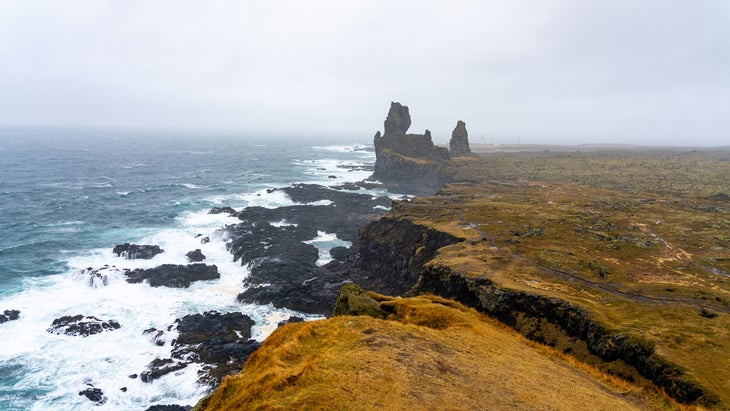
From there we set out to the western tip of the Snæfellsnes Peninsula stopping at a few viewpoints around Londrangar, where you can stand atop some of the most rugged coastline you’ll ever see, featuring massive blue waves pounding jagged volcanic rock spires.
Make your way down to Djúpalónssandur Beach and the Djúpalón Lagoon, where you can hike along a shore covered with smooth, marble-like pebbles and a pool that looks like a prehistoric creature could emerge from it at any moment. This whole area gives strong “Land Before Time” vibes.
After that, we headed back east along the northern border of the peninsula, stopping at the stunning Bæjarfoss waterfall just outside of Ólafsvík. My buddy Pétur didn’t even get out of his car for that one. There are roughly 10,000 waterfalls in Iceland, many of them jaw-dropping, and apparently this wasn’t that exciting by his local standards.
We also swung by the Súgandisey Island Lighthouse, on the northernmost part of the peninsula, where we were greeted with a rainbow, and intense wind. We spent that night at the in Borgarnes (from $250), where I had a deliciously savory lamb steak for dinner.
Day 3: Trek to Less-Visited, Off-Road Waterfalls
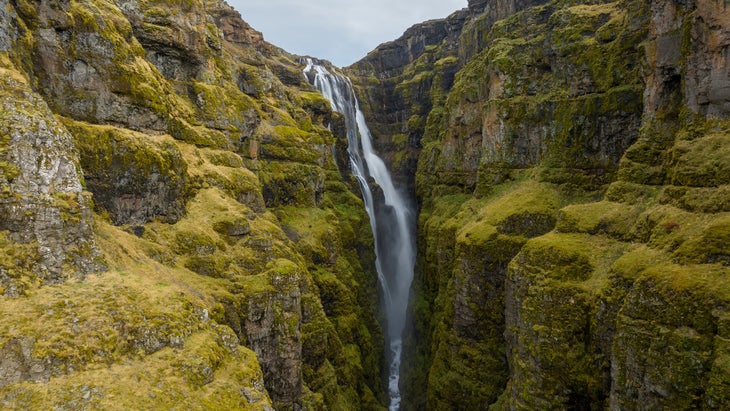
Our next day was all about chasing more waterfalls. The first stop? The small but isolated Fitjarfoss. We were the only ones there, and it was incredibly tranquil. That was just a warmup, though, for the far more challenging four-mile hike to Glymur Falls, which is the second tallest waterfall in the country, at a staggering 650 feet. It’s a slippery and steep hike that involves at least one river crossing and a few scrambles over significant exposure—we’re talking hundreds of feet straight down to the rocky river below. It’s not for the faint of heart, but absolutely gorgeous on the ascent.
Unfortunately, the crossing was washed out when we visited, so we hiked up the near side of the river as far as we could go. Luckily, Pétur had a drone that could fly the rest of the way and get some great shots. Still, it was 100% worth it.
We then made our way to a gorgeous complex of outdoor hot springs called (from roughly $35 per adult). It’s right on Laugarvatn Lake so we alternated between hot soaks and saunas and natural icy plunges—the perfect remedy for our aching joints.
Day 4: Visit the Highlights of the Golden Circle
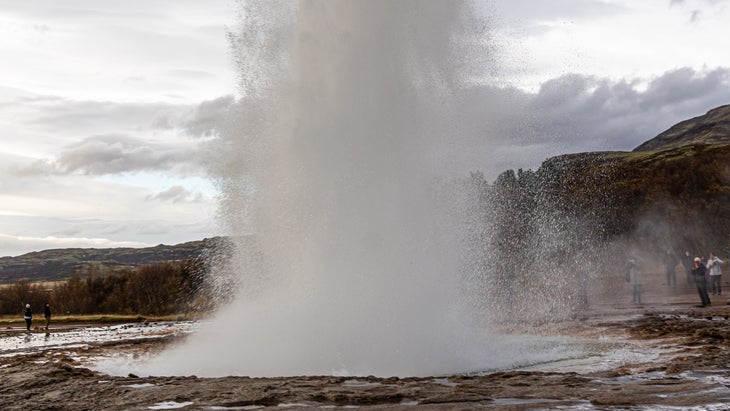
The next part of our plan was to take a ferry out to the stunning Westman Islands, but nature had other ideas. 60 mph winds and 18-foot sea swells not only made the passage unappealing, but impossible, as ferry service was canceled for several days. But this is where having more options in shoulder season really comes in clutch. We were able to cancel all our reservations, and because virtually every hotel in the country had vacancies, we just headed away from the wind.
We bet that the harsher weather would equal fewer tourists, so we hit some of the more popular spots along the famous Golden Circle—the most visited day-trip-style route outside of Reykjavik, if you don’t have time to drive the whole Ring Road around the island.
This portion of our trip included visiting the absolutely massive, Niagara-ish waterfall, Gullfoss. Sure, there were still plenty of tourists, and the wind stirred up the mist which made it feel like it was raining, but it’s a breathtaking thing to behold.
Nearby, there’s also Geysir, which—fun fact—is the geyser that gave all other geysers their name. It’s Icelandic for “to gush.” It’s only erupted twice in the last 25 years, but the adjacent Strokkur geyser goes off roughly every 10 minutes about 60 to 120 feet into the air, and still puts on a killer show. The whole area has a lot of cool geothermal features with a sort of Icelandic Yellowstone vibe, and you can hike all around the area to get a bunch of vantage points.
It’s also well worth visiting , a stunning area where all the old clans of Iceland used to meet annually to decide the laws and policies for the upcoming year. It also has a lake, waterfalls, and a museum with tons of artifacts. This place is steeped in history (some of it tragic) and is a sacred place to Icelanders, so be on your best, most respectful behavior here.
Day 5: Surf Your Heart Out
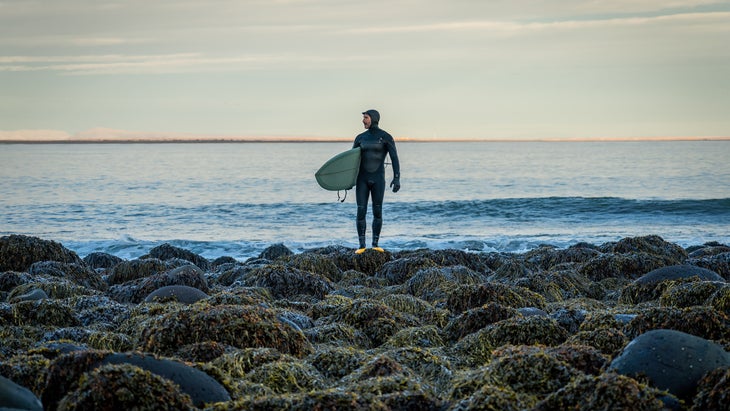
Surfing the Icelandic coast was one bucket-list item I thought I’d never get to check off. In the weeks leading up to my trip, though, I started reading articles about how the best, most-consistent wave in the whole country was at risk of being demolished. The point at Þorlákshöfn (near Thorli Beach) is an incredible, peeling right-hander that just goes and goes like a good day at Malibu. Unlike Malibu, though, you’re likely to have four, not 400, other people in the lineup. It’s been a secret spot for ages, but the mayor of the town of Þorlákshöfn (and other city council members) seem intent on filling it in with boulders to make room for more warehouses around an expanded harbor. So the local surfers decided it’s better to tell the world than risk its destruction. Unfortunately, the town started filling it in already, despite not yet having environmental permits to alter the coastline, and that has abruptly cut off the end section of the wave. It’s tragic. Watch more on the save-the-wave initiative, here:
I reached out to Steinarr Lár, one of the surfers leading the fight to save the wave that is at the very center of Icelandic surf culture and community. He was gracious enough to lend me a board, a thick wetsuit, booties, and gloves, though if you want to experience surfing Iceland for yourself, link up with , which organizes surf tours (starting from $350 per day) and can provide you with everything you’ll need. They’re also deeply involved in activism surrounding the wave.
After suiting up in the parking lot, I scrambled over about 80 yards of slippery, seaweed-covered boulders, and then it was pure magic. The waves were between three and four feet tall, with a gentle paddle in, and they ran for nearly a full minute (apparently longer on bigger days). The locals were friendly, the wetsuit kept me plenty warm, and we all got enough waves to turn our arms to spaghetti.
It’s an incredible natural resource, and the idea of it being filled in to fill a few people’s pockets is frankly outrageous, in my opinion. Go surf it while you can and spread the word.
Days 6 and 7: Treat Yourself to a Northern Lights Wake-Up Call
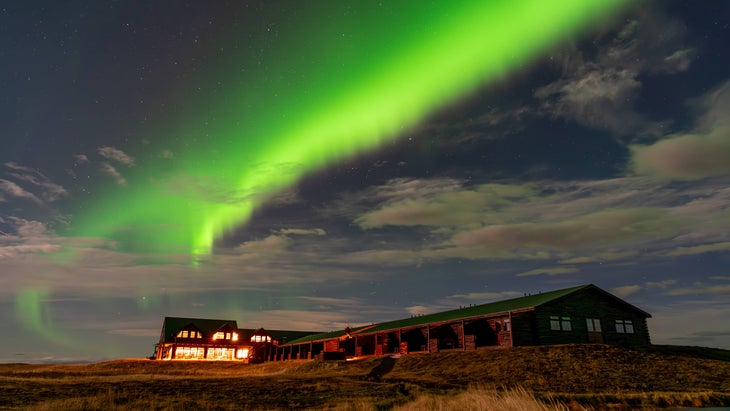
After roughing it for several days, I decided to opt for some luxury. My friend Pétur, who works for a , says that whenever people’s top priority is seeing the Northern Lights, he books them at the (pronounced ron-cow, from $340 per night in shoulder season) because it’s sort of isolated on a big dark plane. Think: 360-degree views. It also has an observatory for stargazing when the lights aren’t visible, and there’s a button on your phone to order a wake-up call in the middle of the night should the lights pop up. It was easily the nicest place I stayed during my entire trip, and it’s a perfect base camp for all south-coast adventures.
Iceland’s version of upscale is different from what you might expect, coming from the U.S. If you have Four Seasons or Ritz expectations, you may be surprised to find that things are a bit more low-key here. Hotel Rangá is still very nice, but it’s more rustic and minimalist—at least in the more basic rooms. (The master suites are each decked out like a different continent and they went all-out.)
That said, its restaurant featured the tastiest food I ate the entire time, with exquisite, tender lamb, fish, and even reindeer carpaccio. They can also organize a candle-lit dinner in a grass-covered cave that used to be an ancient dwelling centuries ago. It’s a must-stay, and wouldn’t you know it, despite none being forecast, we managed to see the aurora on two of the nights we crashed there.
My phone rang around 11 P.M. and I was told the lights were visible. I had pre-arranged many layers of clothes and all my camera gear, just in case. So I threw it all on, rushed out the door, and wow, the sky was lit up with waving, green curtains. There’s a river and a pond behind the hotel, so I played with reflections in my photos, and hooted in joy as colorful ribbons raced over the roof of the hotel. Truly, there’s no other life experience like it.
Bonus: Get Off Road to Tackle Far-Flung Backcountry �����ԹϺ���s
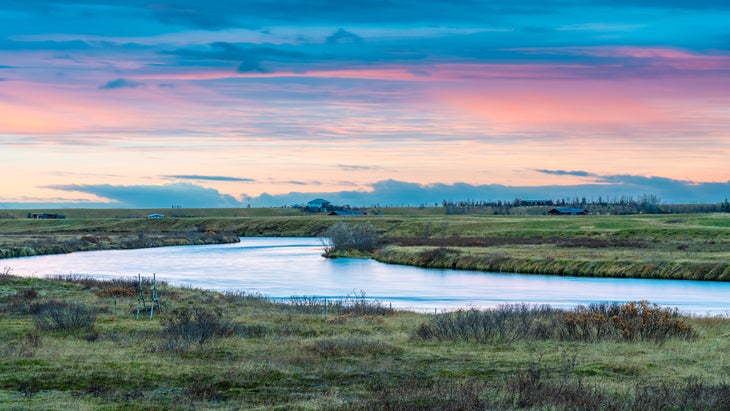
For the last few days of my trip, I wanted to get into some of the places where my friend’s little AWD hatchback couldn’t take me, so I linked up with (also recommended by my friend’s company). We did three expeditions in three days, and each of them got me way off the beaten path. Separately, from that, I also rode some Icelandic horses. Here’s how all of that went:
Take a Buggy Tour into the Wilderness
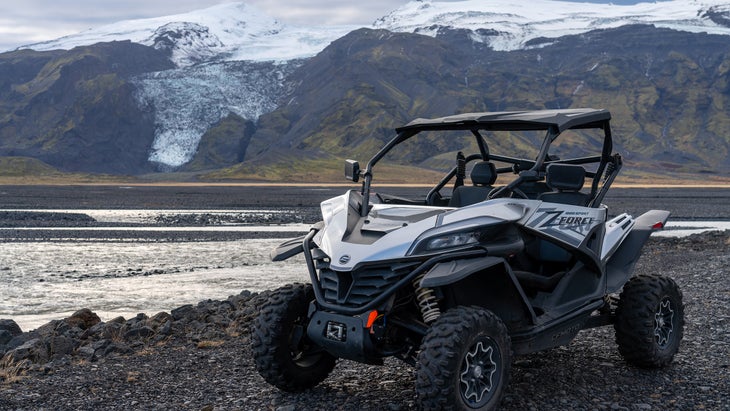
This is one of the best ways to really get out there away from everybody else. These “buggies” are two-seat 4X4 ATVs complete with roll cages, and we headed out to Emstrur, which was an all-day adventure on dirt roads, crossing a dozen small creeks. There were waterfalls, glaciers, and stunning rock formations throughout these mountains, and we didn’t see anybody else on the long road. (Full day tours start at roughly $660, but they also have one-hour and 2.5-hour options.)
Explore the Katla Ice Caves
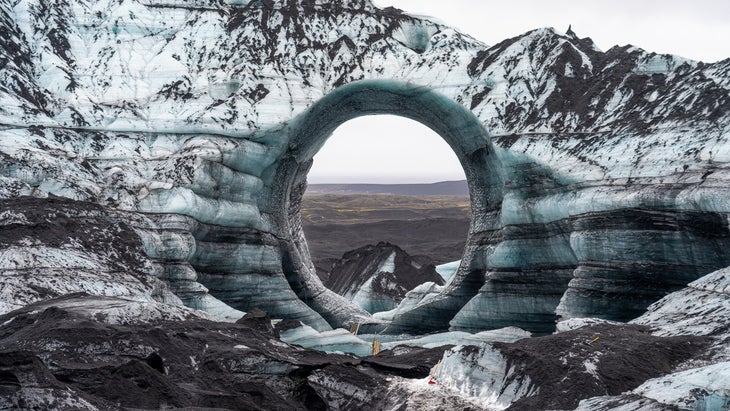
The next day was my favorite expedition, a trek out to explore the Katla Ice Caves (from $205 per person). This is an ever-changing system of ice caves at the end of the Myrdalsjokull glacier. It included a massive ice-arch big enough to fly a decent sized plane through, as well as the chance to explore deep into otherworldly tunnels made of light blue ice, with streams and waterfalls flowing through them.
We even got to do a bit of ice climbing. You’ll be provided with crampons, so make sure you bring boots sturdy enough to support them (this was the one day my Altras weren’t quite up to the task). On the way back we visited three more jaw-dropping waterfalls, including Gljufrabui—which is hidden in a narrow slot canyon—and Seljalandsfoss, which you can hike behind for some stunning canyon views.
Cruise Around Landmannalaugar
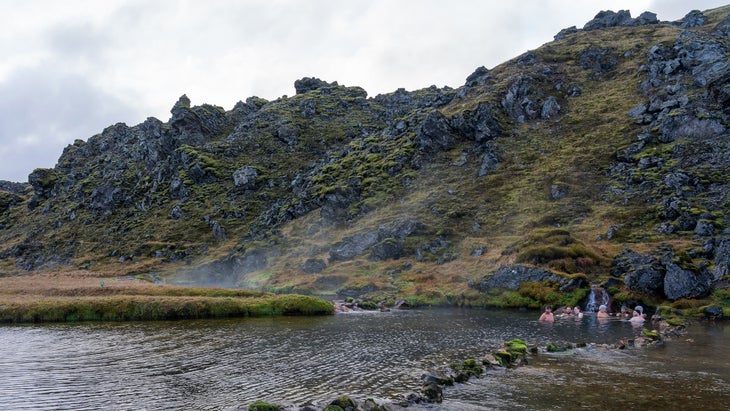
The last day there was spent exploring in what is affectionately known in Iceland as a SuperJeep (starting around $300). It wasn’t actually a jeep at all, but a kitted out 4WD Mercedes Sprinter van. We went deep into the interior highlands of Landmannalaugar, exploring paths cut by glaciers and massive extinct craters. Of course, there were more waterfalls (just countless!), but my highlight was a gorgeous natural hot spring in the middle of the Fjallabak Nature Reserve. It was the perfect way to relax at the end of a long trip.
Ride Iceland’s Famous Wild Horses
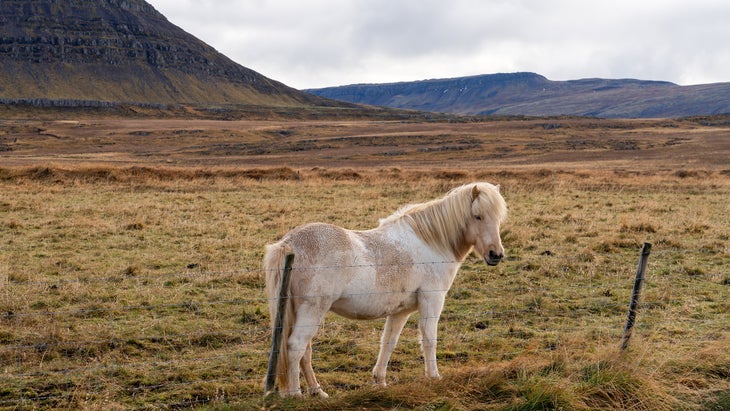
Of course, that isn’t the only way to relax. From Rangá you’re just a quick drive to the coast, or if you want something you truly can’t find anywhere else, go to (rides start around $85/person). Iceland’s horses have been isolated on the island for more than 1,000 years and they have evolved in unique ways, including developing stout bodies, luscious manes, and two specific gaits that only they can perform. They’re incredibly smooth to ride and it’s a fun way to see the grasslands of this stunning country.
Heliski Iceland’s Big Peaks March to June
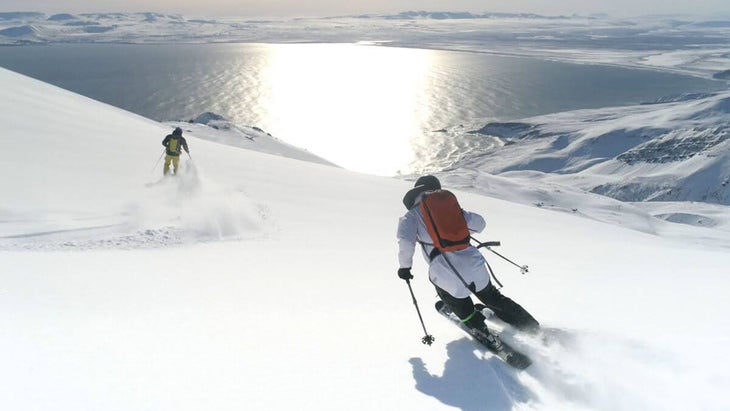
There’s one more adventure I’d be remiss if I didn’t mention: heliskiing or snowboarding from the top of a peak to the shore of the Arctic Ocean. And you can do it with the boutique operation. Based on the far north side of the island, this outfitter offers everything from three to six-day packages that include meals, rentals, avalanche gear, airport transfers, and luxurious accommodations at the . (Prices start at roughly $7,200 per person for the three-day package.)
Tragically, I didn’t get to do this myself (yet!), but from speaking with those who have (and feasting my eyes on photos and video), the terrain you’ll encounter up there is unlike anywhere else. The mountain surfaces tend to be smooth and steep, so they hold powder well and allow for massive, open-faced carves. You’re guaranteed 15,000 vertical feet a day (which is more than you get at most heliski operations), and some runs will take you all the way down to the beach. At night you can enjoy the hotel’s hot tubs, saunas, and the Northern Lights if your timing is right. The season starts in mid-March and goes until mid-June (where you may be able to ski as late as midnight). Dreamy, indeed.
The Bottom Line: I’m in Love with Off-Season Iceland
Perhaps you’ve gathered this much already, but Iceland blew my mind. And now, I really only want to come back during shoulder season. Yes, the weather was tough at times, and sure, not every road was accessible, but traveling during the shoulder season saved me money and paved the way for a better experience. Plus, you simply can’t beat having far fewer tourists around. So bundle up, plan ahead, and if you have to adapt a little? Well, Þetta reddast…
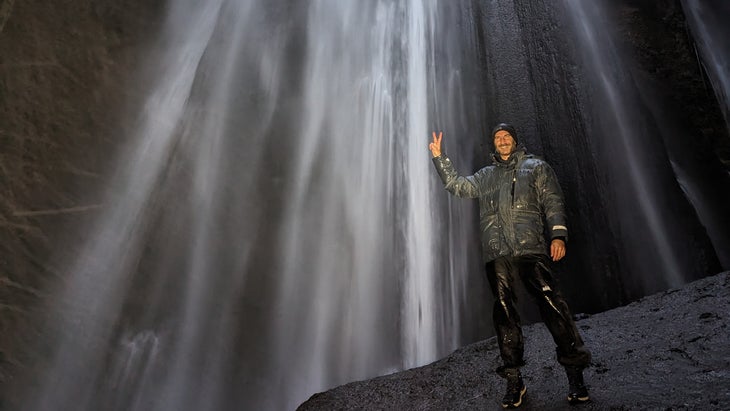
Brent Rose has been covering adventure and gear for �����ԹϺ��� for more than a decade. When he’s not writing, you can find him surfing, snowboarding, hiking, or camping, usually somewhere in California. He’s also on Instagram at or his website at brentrose.com.
